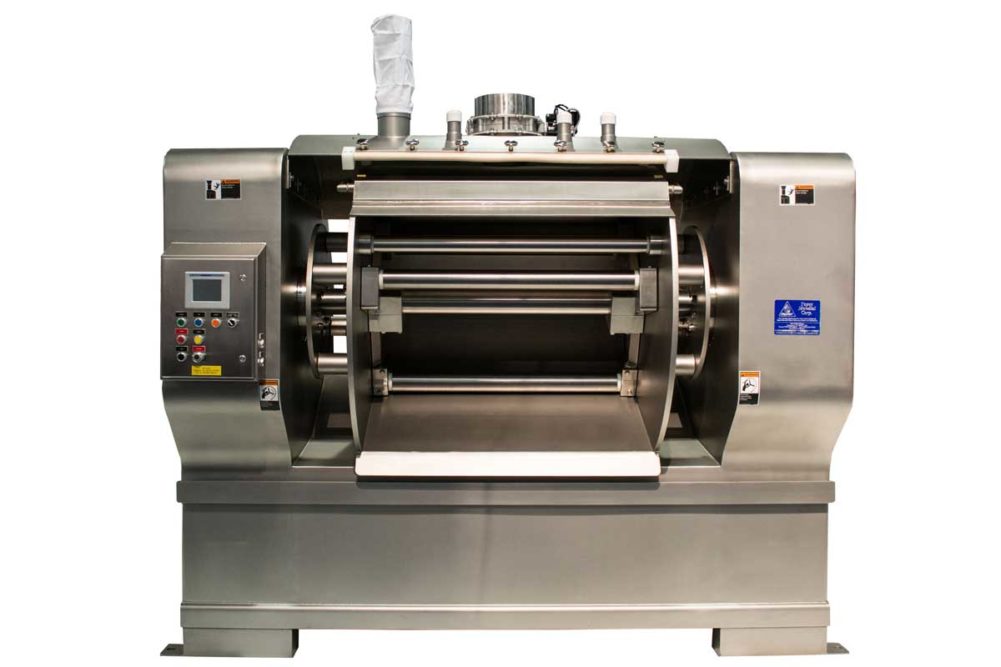To maintain control at the mixer in automated operations, bakers are increasingly turning to new technology to help monitor parameters and increase efficiencies.
“There are a lot more people buying equipment today who grew up with a cell phone, video game or laptop,” said Jim Warren, vice president, Exact Mixing, Reading Bakery Systems. “They know technology, and as they move up in their careers, you’ll see technology like continuous mixing become more wide-reaching.”
WP Kemper’s automation includes Kronos Digital, what the company calls a “smart mixer.” It can monitor parameters including energy, filling level, and dough stiffness, momentum, viscosity and temperature.
“Kronos Digital records all necessary parameters from each batch and can upload them immediately to the bakery’s software to keep track of the data,” said Patrick Nagel, key account manager, WP Bakery Group.
The mixer is “smart” because the baker can teach it what to do, Mr. Nagel said.
“After that, it can reproduce the same dough and knows when to stop,” he added. “This ensures that the operator does not have to monitor flour quality. The mixer knows if a dough needs more or less kneading.”
Intelligent technology helps eliminate risk of human error; that accommodates for a gap in labor where experienced bakers could quickly and easily spot potential problems in the dough.
“There’s no secret that it’s getting harder to staff the bakery,” Mr. Warren said. “People have to start depending on technology.”
And, Damian Morabito, president and chief executive officer of Topos Mondial Corp. said, technology is what ties each stage of the process together.
“From the mixer, dough handling is the next move,” he said. “If that’s a mechanized event, it’s going to have a fixed time, so you’d engineer it so the dough will take 15 minutes to get to the divider every time.”
Although the human variable can be limited at the mixer moving forward, the technology can only do so much if the ingredients coming in aren’t accurate.
“The flour comes in at a consistent temperature,” Mr. Morabito said. “The water’s coming in at a consistent temperature. The other minor ingredients need to come in at a consistent temperature, as well. If the other processes prior to the mixer are consistent, the mixer will do its job. We can mechanize the meters in how they measure the energy put into the dough, and that tells you that it’s properly kneaded. But it’s only as good as how consistently the ingredients come in.”
With a “smart” piece, the mixer can tell the operator if the dough was mixed properly based on flour variations such as quality. But it can’t help with measurement variations.
“It will know it’s properly kneaded for that formula, but it won’t fix it,” Mr. Morabito said. “If you’re under on sugar, over on flour, under on water, it will think it’s mixed for that absorption, but it won’t fix it because it doesn’t know what you did wrong. You have to be consistent with your ingredient handling first.”
When making multiple batches of dough, bakers benefit from having the information stored and easily accessible. That’s why Peerless Roller Bar Mixers come with a “Mix to Energy” program.
“The baker can find the ideal batch and make that his default setting in the program, said Bill Everett, national account manager, Peerless Food Equipment. “The mixer will automatically monitor the energy going into the dough which allows each batch to be very consistent. This takes the decision making out of the operators’ hands to make it a more controlled solution for a quality batch every time.”
Data acquisition is the next generation for bakers to track trends in production, and the AMF Dough Guardian Information Technologies helps bakers react to changes in the dough.
“AMF Dough Guardian will read power needed for the agitator to mix, as well as dough temperature and many other inputs to ensure all parameters are in place,” said Bobby Martin, executive products manager, AMF Bakery Systems.
“Let’s face it. The younger generation of bakers thrives on artificial intelligence and sees the value in having preset rules, and AMF offers that.”
Mr. Martin explained that technology tools such as the AMFMethod training program also offer training that will potentially include augmented reality to speed up the learning process for younger generations of bakers.
It can be said that the most important points in the process are the oven and the mixer. And at the mixer, the stage is set for how the dough machines until it reaches the oven.
“If you have a good dough that’s properly mixed and properly kneaded, it processes really well,” Mr. Morabito said. “It divides, takes shape, kneads and proofs beautifully.”
It’s true you get what you give, so when good goes into the mix, good will come out of the oven.
This article is an excerpt from the April 2020 issue of Baking & Snack. To read the entire feature on mixing, click here.





